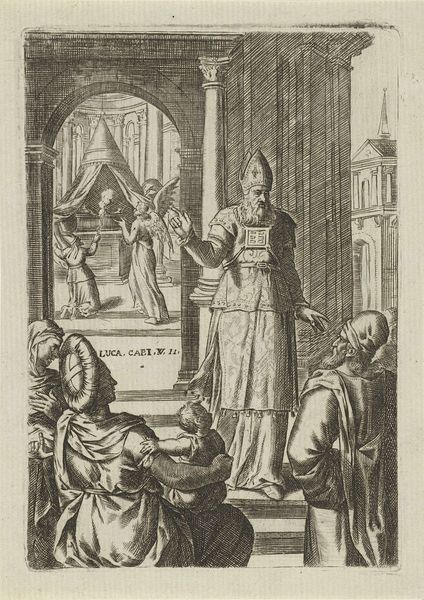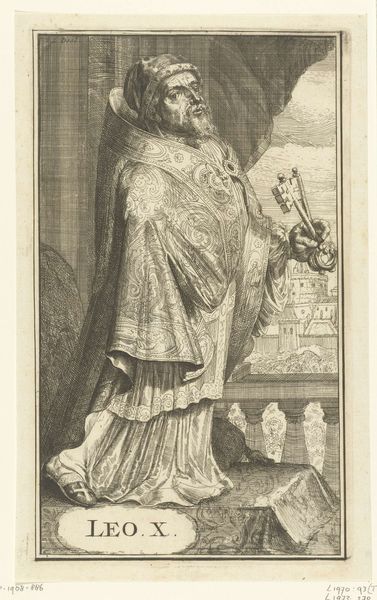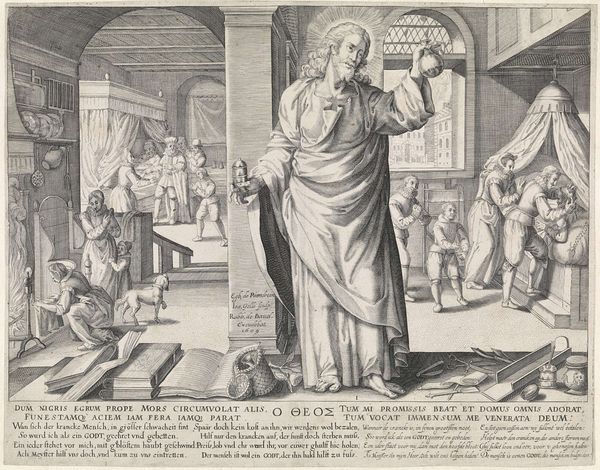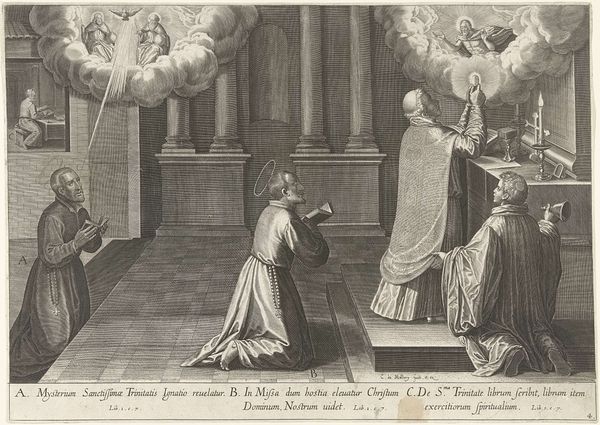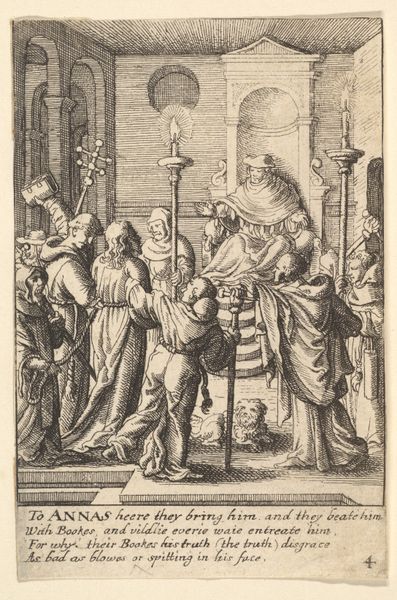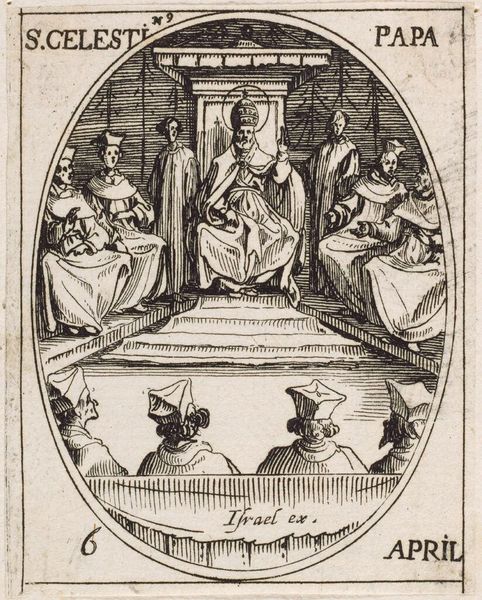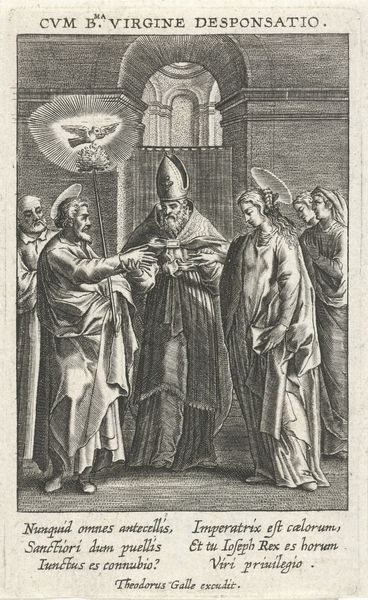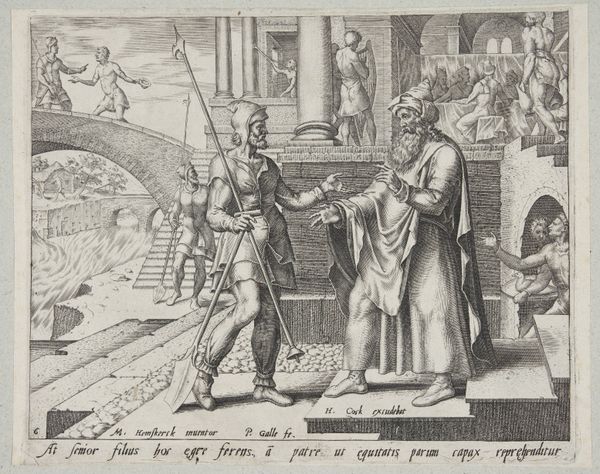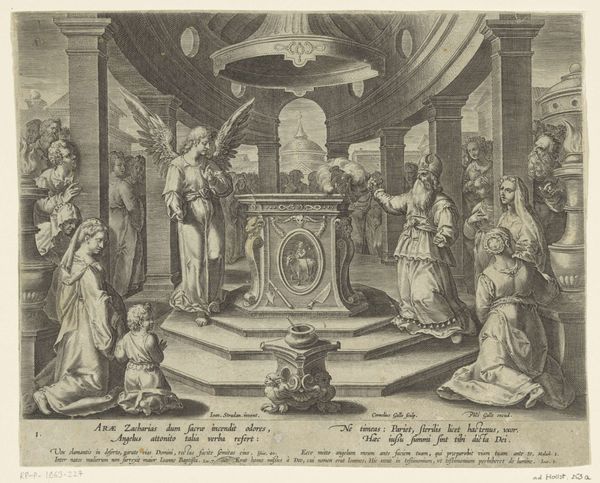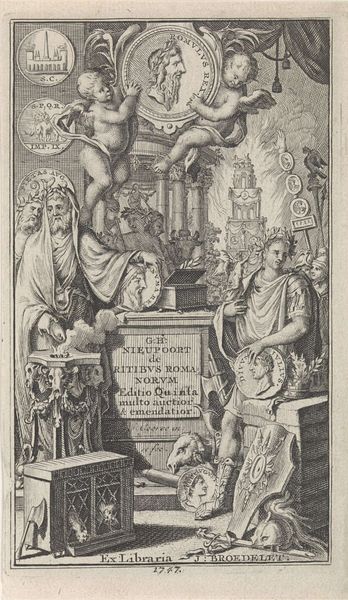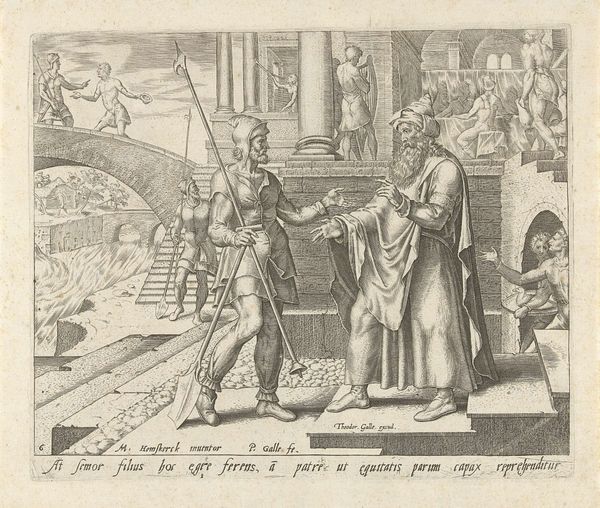
print, engraving
#
narrative-art
#
baroque
# print
#
figuration
#
line
#
history-painting
#
engraving
Dimensions: height 126 mm, width 159 mm
Copyright: Rijks Museum: Open Domain
Curator: Looking at this print, it immediately strikes me how theatrical the composition is. The figures seem arranged on a stage, bathed in a strong, raking light. Editor: Indeed. This is "Heilige Nicolaas wekt drie kinderen weer tot leven," or "Saint Nicholas reviving three children," made around 1597 by Jan (II) Collaert. You can currently find it here in the Rijksmuseum. The scene depicts Saint Nicholas, instantly recognizable by his mitre, bringing three children back to life from a barrel. It’s a pivotal moment from his legend. Curator: Precisely, and look how the strong lines, characteristic of engraving, define every element. From the folds of Saint Nicholas' robes to the cobblestones on the street, everything is rendered with meticulous detail. The stark contrast between light and shadow creates a dramatic visual effect. What kind of symbolism have you noticed? Editor: Well, the barrel itself is heavy with meaning, referencing a grim tale where children were murdered and hidden in a pickling tub, only to be saved by the saint’s intervention. Note the contrasting architecture on either side – the solid, imposing church juxtaposed with the domestic interior depicting daily life. It's about the sacred versus the everyday. Nicholas, positioned centrally, embodies the miraculous power intersecting these worlds. Also, let’s look at Nicholas, reading a book, holding the cross. Are these typical, easily read signs? Curator: Without a doubt, these props contribute to Nicholas' visual identity as a beacon of learning and guidance. But consider how they're used—the compositional rhythm the lines of the cross creates against the architectural detail. His hand gesture is a striking semiotic expression, almost commanding life back into these children, like an act of divine theater. The artist manipulates pictorial space, compressing figures in ways that amplify tension, forcing them into a unified surface. I notice the narrative is embedded here, so we observe figures outside the center of the barrel, some preparing for the evening, a different setting, a narrative apart from the immediate, focalizing miracle. Editor: Absolutely, and that secondary scene speaks volumes about Collaert's intention. The image not only immortalizes a single heroic act, it also speaks of comfort, hope, the domestic sphere touched by the divine. It suggests an enduring cultural narrative. I find it to be powerful in this way. Curator: So, despite its relatively small scale, its density is impressive. A masterclass in visual rhetoric achieved through simple lines. Editor: And what a resonant display of the power of symbols and narrative to shape cultural memory!
Comments
No comments
Be the first to comment and join the conversation on the ultimate creative platform.
